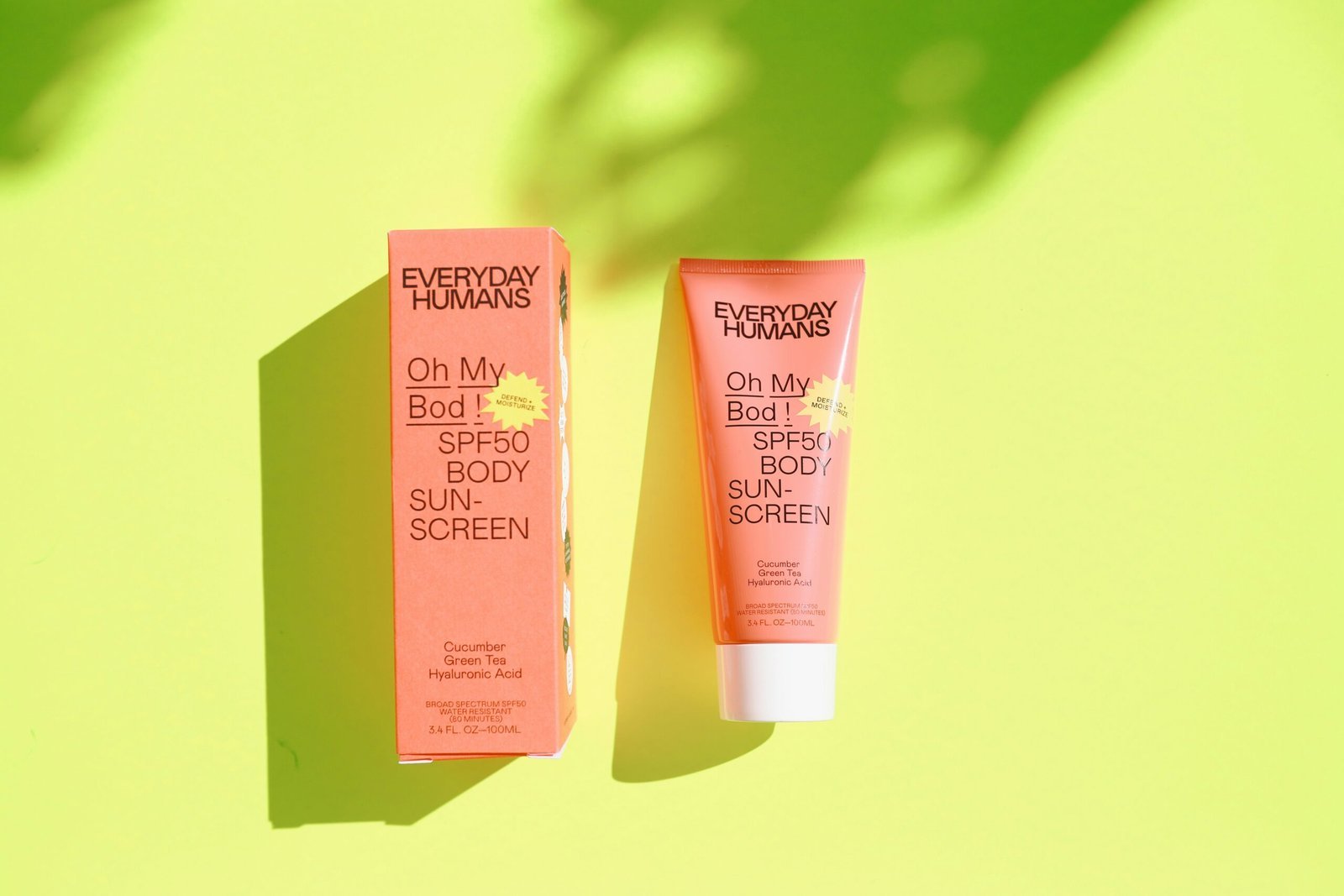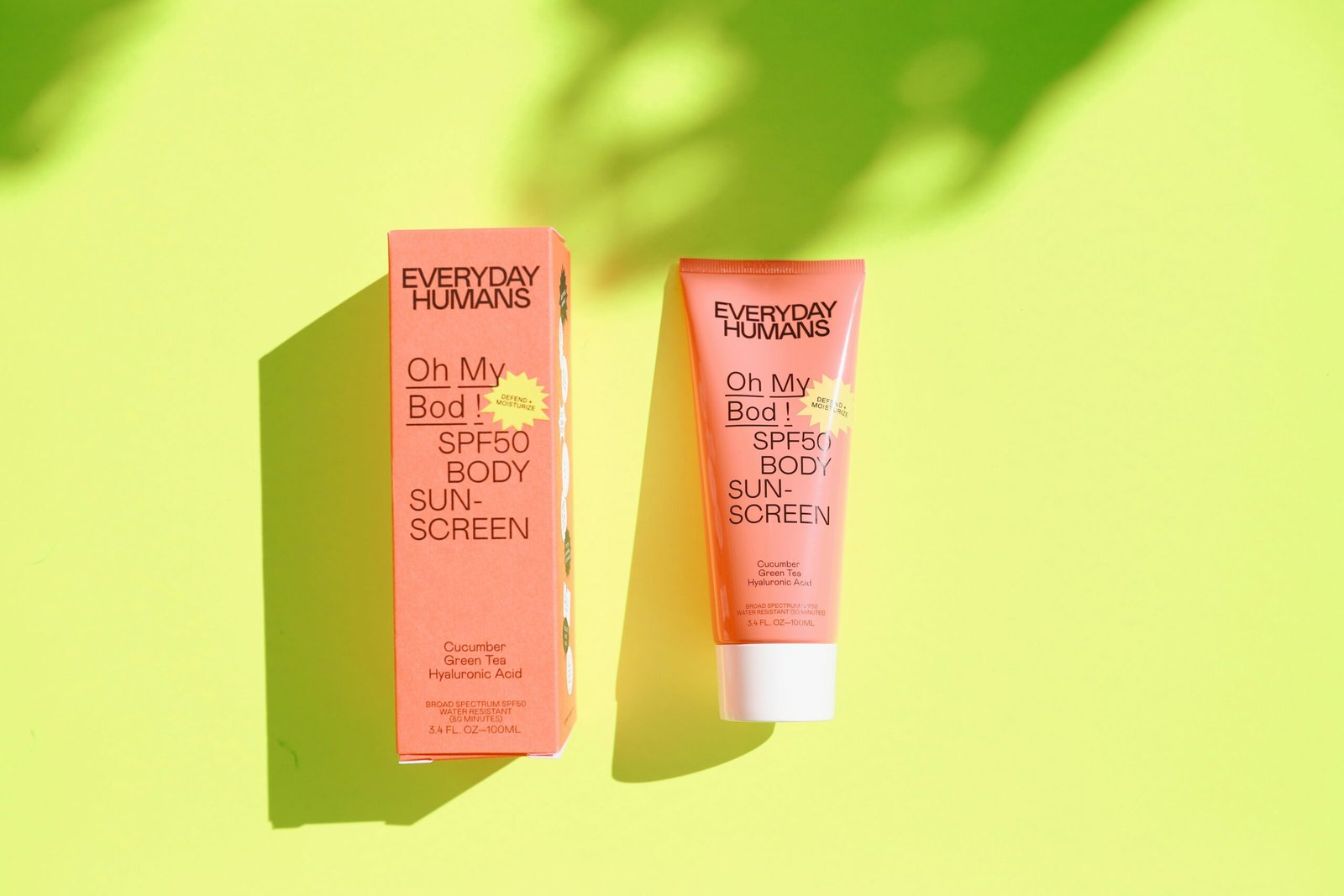
Introduction to Suncare
Suncare is an essential aspect of maintaining healthy skin, focusing on the protection against harmful ultraviolet (UV) radiation. UV rays, emanating from the sun, are categorized into UVA and UVB rays. UVA rays penetrate the skin deeply, contributing to premature aging and wrinkles, while UVB rays are primarily responsible for causing sunburn. Both types of UV radiation can significantly increase the risk of skin cancer, making suncare a crucial daily practice.
Understanding the effects of UV radiation is fundamental to recognizing the importance of suncare. UV exposure can lead to various skin problems, including hyperpigmentation, loss of skin elasticity, and the formation of fine lines. Moreover, UV radiation can exacerbate pre-existing skin conditions such as eczema and rosacea. The cumulative effect of daily exposure, even on cloudy or winter days, underscores the necessity for a year-round suncare routine.
Contrary to common belief, the need for suncare is not limited to sunny days. UV rays can penetrate through clouds and reflect off surfaces such as water, snow, and sand, thereby affecting the skin irrespective of the weather or season. This pervasive nature of UV radiation makes it imperative to incorporate suncare into your daily regimen. Effective suncare involves more than just applying sunscreen; it includes wearing protective clothing, seeking shade, and using accessories like wide-brimmed hats and sunglasses to shield the skin.
As we delve deeper into the intricacies of suncare, it becomes evident that protecting your skin is not merely a cosmetic concern but a vital component of overall health. Subsequent sections of this guide will provide detailed insights into choosing the right sunscreen, understanding SPF, and integrating various suncare strategies into your everyday life. By making informed decisions, you can safeguard your skin against the harmful effects of UV radiation and maintain its health and appearance year-round.
Understanding UV Radiation
Ultraviolet (UV) radiation is a form of electromagnetic radiation emitted by the sun, which is categorized into three main types: UVA, UVB, and UVC rays. Each type of UV radiation has distinct characteristics and varying effects on the skin, necessitating a comprehensive understanding to ensure effective suncare.
UVA rays, which constitute approximately 95% of the UV radiation reaching the Earth’s surface, penetrate the skin more deeply than UVB rays. They are primarily responsible for premature aging of the skin, causing wrinkles and age spots due to their ability to damage collagen fibers and elastin. Additionally, UVA radiation can contribute to the development of skin cancers by inducing oxidative stress and DNA damage over time.
UVB rays, although only making up about 5% of the UV radiation we are exposed to, are more intense and primarily affect the outer layer of the skin, the epidermis. UVB exposure is the main cause of sunburn and plays a significant role in the development of skin cancers, including melanoma. Unlike UVA rays, UVB radiation varies in intensity depending on the time of day, geographical location, and season, making it crucial to adjust sun protection measures accordingly.
UVC rays are the most dangerous type of UV radiation; however, they are effectively filtered out by the Earth’s ozone layer and do not reach the surface under normal conditions. Nonetheless, artificial sources of UVC, such as certain types of welding torches and germicidal lamps, can pose risks in specific environments.
The ozone layer serves as a critical shield, absorbing and filtering out the majority of the sun’s harmful UV radiation. However, factors such as pollution, climate change, and the thinning of the ozone layer can lead to increased UV exposure. Environmental considerations, including altitude, latitude, and reflective surfaces like water and snow, also influence the level of UV radiation one may encounter.
Understanding the science behind UV radiation and its impact on the skin is essential for devising effective sun protection strategies. By recognizing the differences between UVA, UVB, and UVC rays, and acknowledging the role of the ozone layer and environmental factors, individuals can make informed decisions to safeguard their skin year-round.
Choosing the Right Sunscreen
When it comes to selecting the right sunscreen, understanding the different types and their specific benefits is crucial. Sunscreens are broadly categorized into chemical and physical sunscreens. Chemical sunscreens absorb UV radiation, converting it into heat and then releasing it from the skin. These sunscreens often contain ingredients like avobenzone, octinoxate, and oxybenzone. On the other hand, physical sunscreens, also known as mineral sunscreens, sit on top of the skin and reflect UV rays. They typically include zinc oxide or titanium dioxide as active ingredients and are often recommended for those with sensitive skin.
Reading sunscreen labels effectively is another essential skill. The Sun Protection Factor (SPF) rating indicates the level of protection against UVB rays, which are primarily responsible for sunburn. An SPF 30 sunscreen, for instance, blocks approximately 97% of UVB rays. For comprehensive protection, opt for a product labeled as “broad-spectrum,” which shields against both UVA and UVB rays. Water resistance is another key factor, especially for those engaging in water activities or heavy perspiration. Look for labels stating water resistance for 40 or 80 minutes, indicating the duration the sunscreen remains effective while swimming or sweating.
Choosing the best sunscreen also depends on individual skin types and lifestyles. For oily or acne-prone skin, non-comedogenic formulas are ideal, as they won’t clog pores. People with dry skin might benefit from sunscreen with added moisturizers. Those with sensitive skin should avoid chemical sunscreens containing fragrances or alcohol and instead opt for physical sunscreens. For active individuals or those spending extended periods outdoors, a water-resistant, broad-spectrum sunscreen with an SPF of at least 30 is recommended.
By understanding the different types of sunscreen, how to read labels, and selecting products based on specific skin types and needs, you can ensure effective protection against harmful UV rays year-round.
Proper Application of Sunscreen
Applying sunscreen correctly is crucial for effective protection against harmful UV rays. Whether you are heading to the beach or just running errands, knowing how to use sunscreen properly can make a significant difference in safeguarding your skin.
First, ensure you apply a sufficient amount of sunscreen. Dermatologists recommend using about one ounce, or a shot glass full, for your entire body. For the face and neck, a nickel-sized dollop should suffice. Be generous with application on all exposed areas, including often-neglected spots like the ears, back of the neck, and tops of the feet.
Timing is essential when it comes to sunscreen application. It is best to apply sunscreen 15 to 30 minutes before going outdoors. This allows the sunscreen to bind to your skin effectively. Additionally, reapplication is necessary, especially after swimming, sweating, or towel drying. As a rule of thumb, reapply every two hours, even on cloudy days, as UV rays can penetrate through clouds.
Common mistakes can undermine the effectiveness of sunscreen. Many people forget to cover small areas such as the lips and scalp. For lips, use a lip balm with SPF, and for the scalp, either apply sunscreen directly or wear a hat. Another common error is relying solely on makeup or moisturizers with SPF. While they offer some protection, they are not a substitute for a dedicated sunscreen product.
Finally, be mindful of the expiration date. Sunscreen loses its potency over time, so using an expired product can leave your skin unprotected. Store your sunscreen in a cool, dry place to maintain its effectiveness.
By following these guidelines, you can maximize the protective benefits of sunscreen and reduce the risk of sunburn and long-term skin damage. Proper application is key to enjoying the sun safely and keeping your skin healthy year-round.
Additional Suncare Measures
While sunscreen is a fundamental component of any suncare regimen, it is equally important to adopt additional measures to ensure comprehensive skin protection. One effective strategy is to wear protective clothing. This includes wide-brimmed hats that shield the face, ears, and neck from direct sunlight, and sunglasses that guard the delicate skin around the eyes while preventing UV damage to the eyes themselves. Opt for sunglasses with UV400 protection for optimal defense.
Seeking shade during peak sun hours, typically between 10 a.m. and 4 p.m., can significantly reduce UV exposure. Engaging in outdoor activities during early morning or late afternoon not only minimizes direct sunlight but also decreases the risk of sunburn and long-term skin damage. For unavoidable outdoor exposure, UV-protective accessories such as umbrellas and window films offer an added layer of protection. UV-blocking umbrellas are particularly useful for portable shade, while window films can be installed in homes and vehicles to filter out harmful UV rays.
Another often overlooked aspect of suncare is the role of diet and hydration in maintaining healthy skin. A diet rich in antioxidants, such as vitamins C and E, helps combat the free radicals generated by UV exposure. Foods like berries, nuts, and leafy greens are excellent sources of these vital nutrients. Hydration is equally crucial, as well-hydrated skin is more resilient against sun damage. Drinking plenty of water and consuming hydrating foods like cucumbers and watermelon contribute to overall skin health.
By integrating these additional suncare measures with regular sunscreen application, individuals can significantly enhance their skin’s defense against the sun’s harmful effects. Comprehensive suncare involves a holistic approach, combining protective clothing, strategic sun exposure, and a nutrient-rich diet to maintain healthy, protected skin year-round.
Suncare Myths and Facts
In the realm of suncare, numerous myths persist, leading to misconceptions that can compromise skin health. One prevalent myth is the belief that darker skin tones do not require sun protection. This is a dangerous misconception. While it is true that darker skin contains more melanin, which offers some degree of natural protection against UV radiation, it does not make one immune to UV damage. Studies have shown that individuals with darker skin are still at risk for sunburn, hyperpigmentation, and skin cancer, though the incidence rates may differ from those with lighter skin. Hence, suncare is essential for everyone, irrespective of skin tone.
Another common myth is that sunscreen is only necessary on sunny days. In reality, UV rays can penetrate through clouds and even glass, meaning that sun protection is important every day, regardless of the weather or whether you are indoors. UVA rays, in particular, are known for their ability to cause skin aging and can penetrate deeper into the skin, making daily protection a necessity.
The misconception that a higher SPF always means better protection is also widespread. While it is true that higher SPF values indicate greater protection against UVB rays, the difference becomes marginal beyond a certain point. For instance, SPF 30 blocks around 97% of UVB rays, while SPF 50 blocks about 98%. The key to effective sun protection lies in the proper application and reapplication of sunscreen, rather than solely relying on its SPF value. It’s also crucial to use a broad-spectrum sunscreen that protects against both UVA and UVB rays.
Understanding these facts allows for informed decisions regarding suncare, ensuring that protective measures are both effective and appropriate for all skin types and conditions. By debunking these myths, we can foster better skin health practices that can mitigate the risks associated with UV exposure.
Suncare for Specific Groups
Protecting your skin from the harmful effects of UV radiation is crucial for everyone, but certain groups require special attention due to their unique needs and vulnerabilities. This section delves into suncare recommendations tailored for children, the elderly, and individuals with specific skin conditions, ensuring comprehensive protection for each group.
Children: Young skin is particularly sensitive to UV radiation, making effective suncare essential. It is recommended that children wear broad-spectrum sunscreen with an SPF of at least 30, reapplied every two hours, especially during outdoor activities. Physical barriers like wide-brimmed hats, sunglasses, and protective clothing are also vital. Educating children about the importance of suncare can instill lifelong healthy habits. Encourage them to seek shade during peak sun hours and make applying sunscreen a fun and routine activity.
The Elderly: As people age, their skin becomes thinner and more susceptible to damage from UV rays. Sunscreen with a higher SPF, such as 50 or above, is advisable for older adults. Additionally, wearing protective clothing and seeking shade are effective strategies. The elderly should also be vigilant about monitoring their skin for any changes or signs of damage, such as new moles or spots, and consult a dermatologist regularly.
Individuals with Specific Skin Conditions: For those with conditions like eczema, psoriasis, or vitiligo, suncare requires additional considerations. Sunscreens should be free from fragrances, dyes, and other potential irritants to avoid exacerbating these conditions. Mineral-based sunscreens, containing zinc oxide or titanium dioxide, are often recommended as they are less likely to cause irritation. Consultation with a dermatologist can provide personalized suncare advice and product recommendations tailored to individual skin needs.
Understanding the distinct suncare needs for these specific groups ensures that everyone can enjoy the outdoors safely while minimizing the risk of skin damage. By adopting appropriate protective measures, we can safeguard our skin’s health year-round.
Conclusion and Long-Term Benefits of Suncare
As we have explored in this guide, consistent suncare is paramount to maintaining healthy skin and preventing various forms of damage caused by ultraviolet (UV) radiation. Regular application of sunscreen, wearing protective clothing, and seeking shade are foundational practices that protect the skin from the immediate effects of sun exposure, such as sunburn and photoaging.
One of the most significant long-term benefits of diligent suncare is the reduction in the risk of skin cancer. Prolonged exposure to UV rays is a leading cause of skin cancer, including melanoma, which can be life-threatening. By integrating sun protection into your daily routine, you can substantially decrease your risk of developing such conditions.
Furthermore, suncare plays a crucial role in preserving the skin’s youthful appearance. UV rays accelerate the breakdown of collagen and elastin, leading to premature wrinkles, fine lines, and loss of skin elasticity. Consistent use of sunscreen and other protective measures helps to maintain a smoother and more resilient skin texture over time.
In addition to these benefits, a comprehensive suncare routine supports overall skin health. It minimizes the occurrence of sunspots, hyperpigmentation, and other forms of discoloration that can result from UV exposure. By protecting your skin, you are investing in its long-term health and aesthetic appeal.
We encourage readers to adopt a comprehensive suncare routine that includes daily sunscreen application, regardless of the weather or season, and to seek further information from reputable sources such as dermatologists and health organizations. By making suncare a habitual part of your lifestyle, you can enjoy the sun responsibly while ensuring your skin remains healthy and vibrant for years to come.


